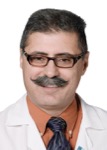
It seems the common denominator for general surgeons is a new syndrome that has become a 21st-century household term: burnout. After over four decades in healthcare, three decades in medical education and one decade directing a general surgery residency program, I feel compelled to share some of my thoughts regarding this rapidly spreading pandemic.
Choosing a career path is a complex process that requires mental, emotional and even physical effort. For those contemplating a career in medicine, early exposure is essential to learn what the medical field is all about. As general surgeons in practice, we used to accommodate students who wanted to explore, many of whom ultimately chose a career in medicine and excelled to become esteemed colleagues. Today, such clinical attachments have been eliminated due to the liability associated with potential incidents including on-site accidents and infectious disease transmission, sending unique mentoring opportunities up in flames.
Once enrolled in medical education, many students experience difficulties they never thought they would face. Did they have the wrong expectations? Were they ill prepared for this next chapter in life? With some luck and lots of hard work, most graduates emerge ready to enter the final chapter of their medical education: residency training.
Residency programs and their “grueling hours” have been discussed ad nauseam, and have been addressed through a series of regulations that came down after the Libby Zion tragedy of New York City in 1984. Regulations were established to improve residents’ lives without hindering their educational experiences, but ultimately, these regulations have had an unintended negative impact.
It has proved extremely difficult for residency program directors to navigate new nuances, such as 80-hour week caps, without compromising educational integrity. Program directors must become acrobats to ensure the best surgical experience for residents: more OR time and less clinic time, rounding time, and overnight calls, despite overnight calls as an essential part of education in trauma and acute care surgery. With the night float system, overnight calls remain a challenge. As a result, we schedule residents to take call on weeknights to avoid a single weekend call burning 24 out of 80 weekly hours. Ultimately, a lack of weekend overnight calls curtails trauma experience.
As a result, we have unintentionally funneled residents into “itinerary surgery” and lack of patient “ownership”—operating without detailed knowledge of patients in the immediate preoperative, postoperative and follow-up period leading to a new set of concerning issues regarding continuity of care, frequent handoffs and patient safety. It is no surprise that some graduating residents lack confidence, leaving them with no choice but to seek additional fellowship training. It is the irony of fate that some graduating surgery residents apply to general surgery fellowship programs. To escape cynicism, these programs are now listed under “transitions of care” programs. Furthermore, fellowship-trained surgeons are unfortunately less likely to practice where they are needed the most: in rural America. What we need are well-trained, confident, “bread and butter” general surgeons to emerge from general surgery training programs. Amid all of this, residents still report being burned out. Is this another case of wrong expectations?
What About the Program Directors?
It has never been so daunting to run a residency program as it is today. Juggling resident schedules, never-ending administrative duties, commitment to didactics, online educational programs, preparing for the American Board of Surgery in-Training Examination, navigating conflict management—the list goes on. Managing faculty is not any easier. Ensuring completions of assigned tasks, managing scheduling limitations and faculty’s expectations of residents is equally challenging. Between the two groups, it feels like herding cats.
Program directors are tasked with a thankless job. They struggle between three opposing forces with little support: the residents, the faculty and the administration/regulatory agencies.
For those who have completed their residency training and flown the coop, things might seem to have settled—a well-deserved and long-awaited break. But burnout creeps in before they even started. This is a serious problem that almost every physician is talking about. It is a pandemic, although I must admit, I do not understand how they could not expect the challenges ahead. There are no limitations in work hours after residency training, and having a successful surgical career after residency training is tied up, first and foremost, to our expectations.
During my service on the board of directors for a large medical group in Southern California, burnout and physician wellness commanded special attention. Data from surveys have their own biases: Results are subjective at best and are not ideal. With that in mind, physicians report several factors that are responsible for their burnout. To name a few: heavy workload, extended hours of work and extra duties, overnight calls, documentation and incomplete medical records, electronic medical records, billing, responding to a barrage of patient messages, and all the “mandatory” online courses or modules physicians must take to satisfy regulatory standards. In many systems, we must not forget the pressure on physicians to produce more relative value units, which dictates their fee schedule.
There is no easy fix for these mounting pressures, and we should not expect leaders to have ultimate solutions. The challenges are in constant flux, and it is unlikely that anyone could come up with an equation that attends to the market pressures, organizational priorities and physician wellness. Like them, I have no ultimate solutions, but I can make a few recommendations.
Healthcare organizations should off-load the physicians’ plate as much as possible. Doctors should only do what other extenders are unable to do. Lab results and screening tests should be automated, keeping physicians out of closing the loop. The tsunami of patients’ messages should be handled as much as possible by dedicated staff of physicians or other providers. Virtual care is here to stay, and systems should be created to deal with common signs and symptoms online. Investing in system solutions and innovation in information technology is vital.
For practicing physicians, one must accept reality and try to be proactive and resilient. Prioritization of work demands and resetting expectations can go a long way. Taking care of personal health and engaging in hobbies are essential—the foundations that helped me cope with the pressures and adjust my expectations accordingly.
Unlike some of my colleagues who can hardly wait for the age of retirement, or even for an early retirement, I vow to continue my practice as long as my brain is sharp and my hands follow what my brain commands them to do. At the end of the day, resetting my priorities at work and home can help diffuse work pressure that drains my satisfaction in life and career. To me, it has always been, and will continue to be, “mind over matter.”
Dr. Johna is a clinical professor of surgery, at Loma Linda University School of Medicine, in Loma Linda, Calif., and Kaiser Permanente Bernard Tyson School of Medicine, in Pasadena, Calif. He is a staff surgeon with Southern California Permanente Medical Group.


